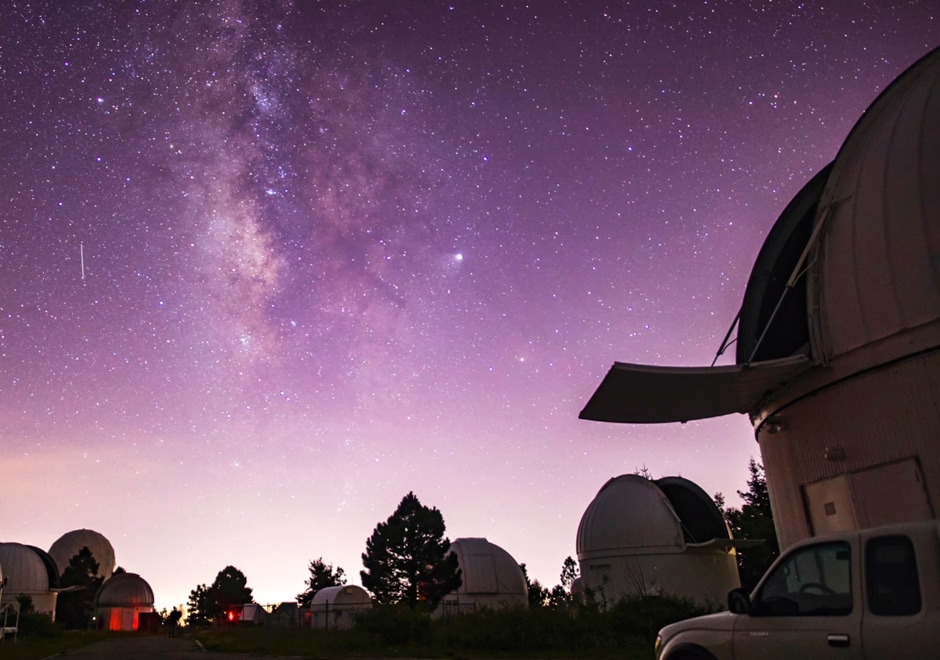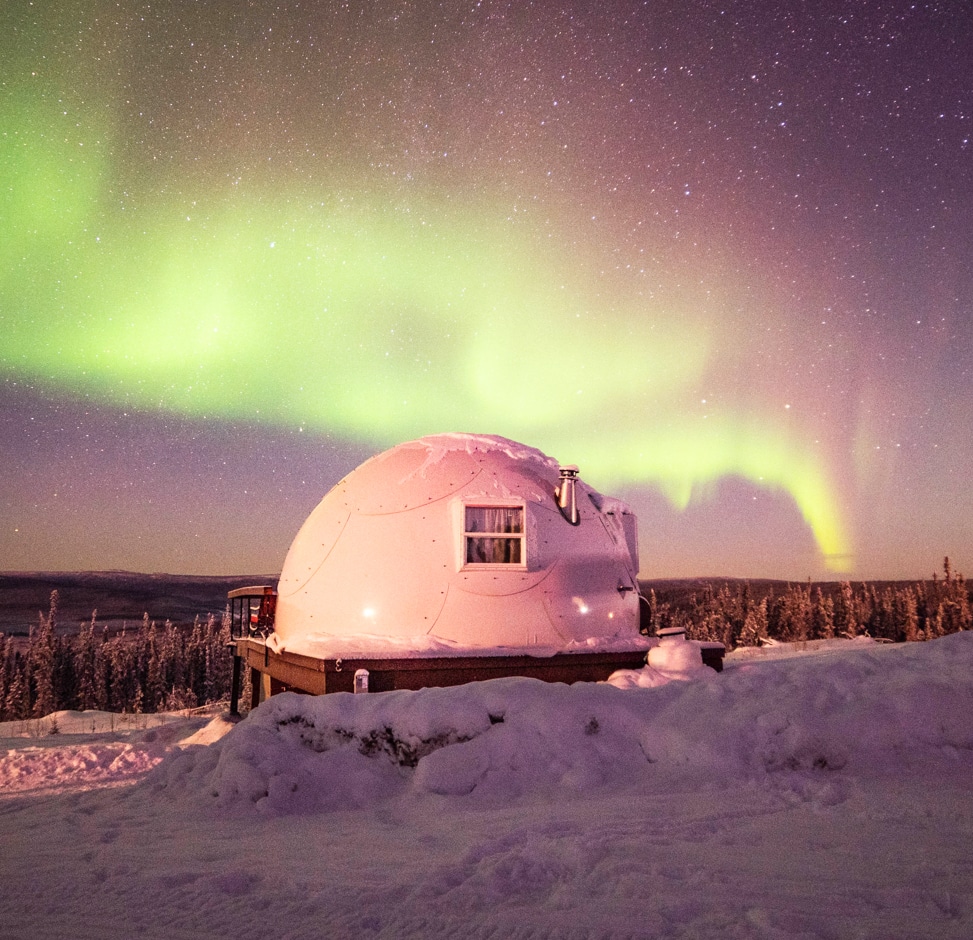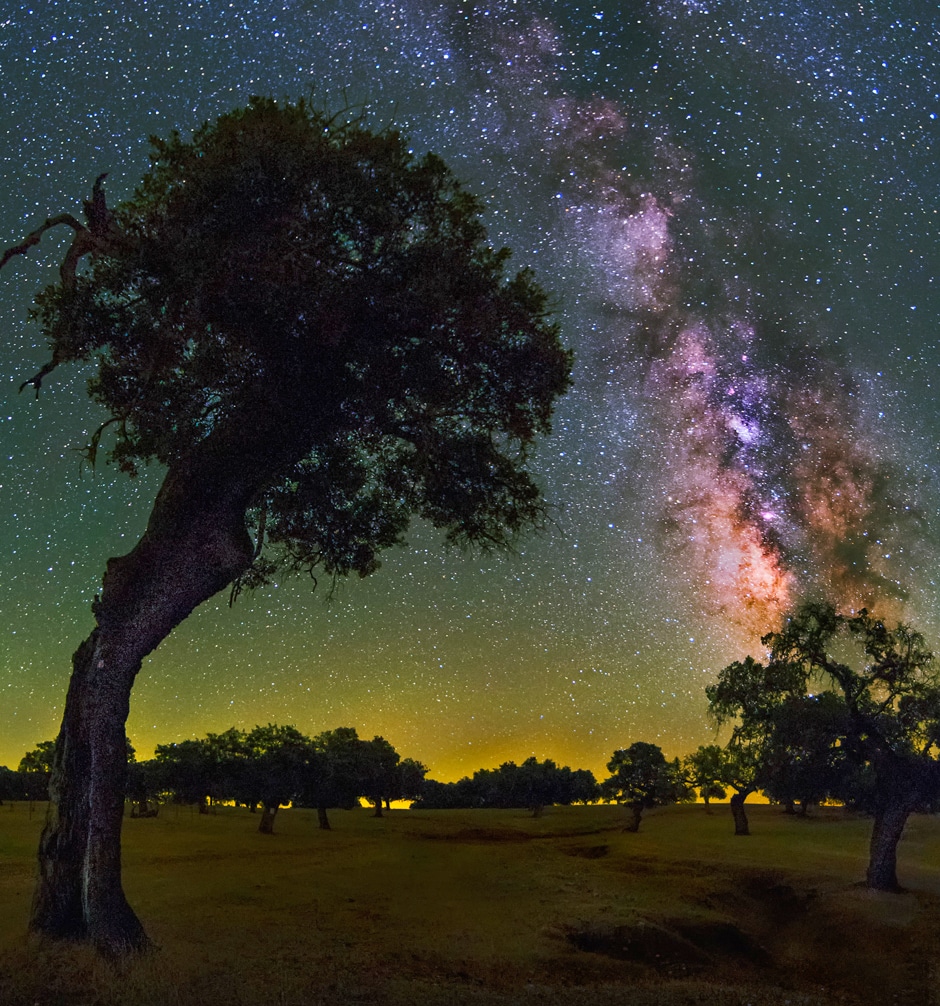3 Great Places Around the World to Go Stargazing
Country escapes, Arctic igloos, or desert observatories—here’s where to wonder at the night sky (or just the inspo you need to stargaze in your own backyard!).

Out Of This World
Tucson
“Telescopes are time machines—the farther away an astronomical object is, the farther back in time you’re viewing it,” says Bill Buckingham, the visitor-center manager at Kitt Peak National Observatory, in the Sonoran Desert in Arizona, one of two world-class stargazing spots near Tucson. The observatory, famous for dark-matter and exoplanet discoveries, hosts guided tours and solar-telescope viewing.
Two hours northeast of Tucson in the Coronado National Forest, the University of Arizona Mount Lemmon SkyCenter holds stargazing for 28 guests, astronomy overnights, and photography workshops. The center’s director, Alan Strauss, Ph.D., says “visitors gain an understanding of humanity’s place in the universe and learn stargazing skills to use anywhere in the world.”

Into-The-Wild Aurora Viewing
Subarctic Alaska
Witness the Northern Lights streak across Alaska’s chalkboard-black sky from your own private igloo at Borealis Basecamp (from $389 per night), 25 miles north of Fairbanks. The 100-acre wilderness retreat generates its own electricity and has 15 Arctic-expedition-quality, heated fiberglass huts, each with a clear ceiling dome, Scandinavian-style furnishings, a full bath, Wi-Fi, and a deck overlooking the White Mountains. In a comfy yurt, guests dine on chef-prepared local seafood, game, and hydroponically grown vegetables. Available from August 21 to April 10, two-night stays include breakfast, guided stargazing, snowshoeing, fat-tire biking, and sledding.
“Download an app like Skyview for local stargazing. Because sometimes you just have to look up to be reminded of how tiny we are. That should bring you back to earth if you need a little grounding.”
—Jonathan

Star-Party Retreat
Fregenal De La Sierra, Extremadura, Spain
“For thousands of years, humans have studied the night sky—stargazing is in our DNA,” says Cristina Fabo Induráin, co-owner with José Luis Quiñones of the Entre Encinas y Estrellas Astronomical Complex (from $150 per night), 90 minutes from Seville, Spain. During astronomer-guided night sessions at this rural retreat, you view constellations, the spiraling Andromeda Galaxy, and the Milky Way with the naked eye, and then step up to a powerful telescope for a peep at the moon, planets, and red, gaseous nebulae. Perfect for a family or friends’ getaway, the complex’s contemporary houses can accommodate up to 28 guests.
Astronomy 101
1. Ideal weather conditions for stargazing are clear, dark skies; clean air; and little wind. Night skies are darkest during the new moon.
2. The bigger the diameter of a telescope lens, the more starlight it captures and the farther into deep space it can see.
3. Scientists measure how far objects are from Earth’s solar system in light-years (the distance that a ray of light travels in 365 days).
By Kit Bernardi | Photos courtesy of Bettymaya Foott/Mount Lemmon Skycenter/University of Arizona; Borealis Basecamp; E-Eye





